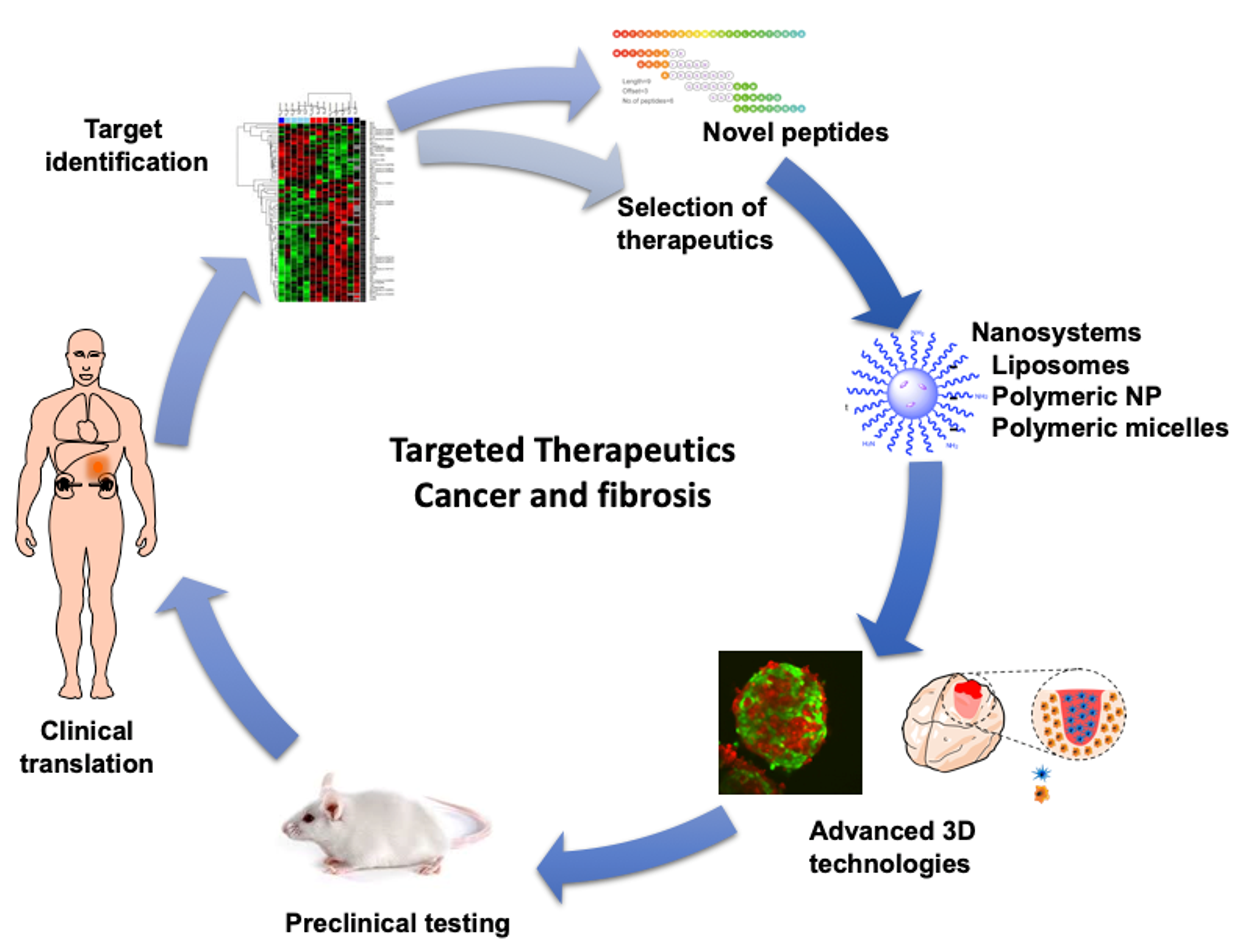Targeted treatment of cancer
Despite many treatments against cancer, treatment of cancer is still a big challenge in clinics. In recent years, the significance of fibrosis in cancer so-called tumor stroma has been highlighted in driving the tumor progression and metastasis. The crosstalk between tumor cells and stromal cells such as cancer-associated fibroblasts (CAFs) and tumor-associated macrophages (TAMs) as well as extracellular matrix (ECM) is essential to maintain and stimulate the tumor growth and progression. On the one hand, researchers are uncovering the underlying biology of tumor stroma interaction, while on the other hand, they are developing innovative technologies to target specific tumor stromal cells to inhibit their pro-tumorigenic effects and thereby improve the efficacy of anti-cancer therapies.
Our research group, headed by adjunct professor Jai Prakash, focuses on three major research themes –
- Identifying the novel targets within the tumor microenvironment: Understanding the crosstalk between different cell types within the tumor microenvironment, especially focused on CAFs, TAMs and ECM interaction. Researchers have identified several therapeutic targets which are involved in these crosstalks (Kuninty et al 2016, Binnemars-Postma et al, 2018, Schnittert et al, 2018).
- Peptide technologies and Nanotechnologies to modulate the tumor microenvironment: Peptide technologies have been developed as therapeutics to re-program the tumor microenvironment in order to enhance anti-tumour effect of chemotherapy. Researchers have recently developed novel integrin targeting peptides (Kuninty et al). Targeted nanomedicine to deliver therapeutic molecules (e.g. microRNA delivery, protein and peptide delivery) to specific cells within the tumor microenvironment to treat cancer. Researchers have recently developed technologies to deliver miRNA (Schnittert et al 2017) and peptides (Mardhian et al 2018) using nanoparticles.
- 3D Technologies to emulate the tumor microenvironment (e.g. multicellular tumor spheroids, tumor-on-chip models, 3D bioprinted tumor models). Researchers have developed 3D heterospheroid tumor model and studied nanoparticle penetration (Priwitaningrum et al 2016) and recently 3D bioprinted mini-brain model (Heinrich et al, 2019).

